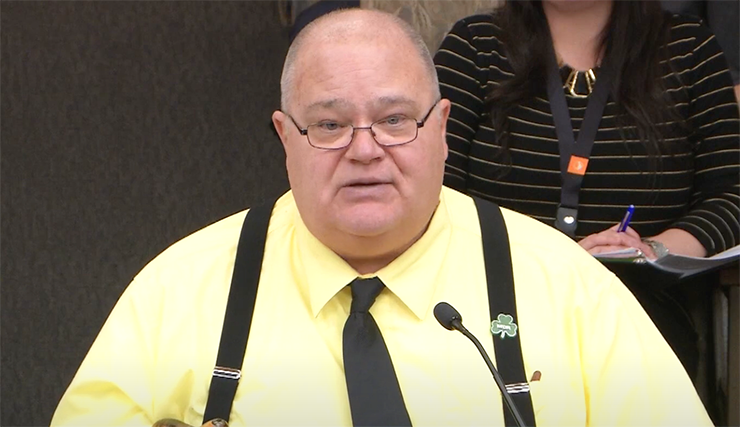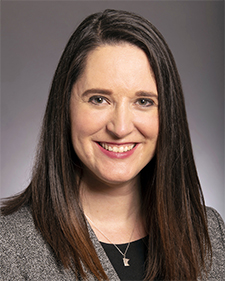Patrick McClellan interrupted a home-improvement project to talk about what Minnesota’s new recreational marijuana law does for medical cannabis patients like himself.
What was the project? He was installing a hydroponic system as part of a plan to grow his own marijuana to treat symptoms from muscular dystrophy.
“Home grow, in and of itself, is a game changer for patients,” McClellan said. “The ability for us to produce our medication legally at home – the strains we want, using the soils we want to use – is a huge step.”
That is just one of the provisions in House File 100 that might have been aimed at all recreational users, but have special benefit to the 40,000 or so residents who are registered in the state’s nearly decade-old medical cannabis program.
Despite fears of being absorbed by a massive recreational marijuana system passed this year, patients in the medical cannabis system authorized in 2012 might end up with the best of both worlds. When the recreational retail system gets set up in the early spring of 2025, there will be an expansion in the number of dispensaries where medical marijuana products can be purchased. Price reductions will likely result from wider competition.
“Patients who have been going to the two providers for the last nine years have been extremely limited,” he said. “Now their options are going to expand tremendously. And I guarantee patients who have been in the program for a long time are going to be shopping for new places, new products but definitely for lower prices.”

Now, the two medical providers – RISE and Green Goods – are allowed only eight dispensaries each across the state. That requires some patients to travel long distances many times a year. Allowing a new mid-sized provider called a mezzobusiness to serve medical customers will increase access.
“I think the patients came out pretty well,” said Maren Schroeder, a principal at High Level Strategies and the Policy Director for Sensible Change, a group that advocates for medical cannabis expansion and recreational marijuana legalization.
What the new law means for medical users
The Minnesota medical program was something of a struggle to get approved. Both then-Gov. Mark Dayton and many lawmakers were skeptical of the program and its utility as a medicine. When the law took effect in 2015, it allowed only two providers and eight dispensaries. Just a handful of medical conditions were eligible and neither dried flower nor edibles was allowed, only tinctures and creams. Perhaps as a result, it started with just 5,000 patients.
Both the medical conditions and the number of dispensaries has increased gradually. Dried cannabis flower was allowed for smoking and vaping by statute in 2021 and the Department of Health permitted edibles last year. But despite promises by the providers of a price drop because flower required much less expensive processing, and despite expectations of the regulators that the number of registrants could reach 100,000, neither happened. Patient numbers did grow, but only from 29,000 to 40,000.
The lack of price cuts after flower is one reason why many medical patients are unhappy with the two medical providers. McClellan said the companies offer lower prices for the same products in other states and he sees little price competition among the two.
As a result, he said he gets most of his marijuana on the illegal market and will now take advantage of the home grow provisions of the law. Setting up an indoor garden with lights, ventilation and a hydroponic or traditional soil-based system could cost between $1.000 and $2,000. His set-up is running him $3,000 for a larger garden but he expects to break even after the first year.
His annual supply from one of the two suppliers would cost him $500-to-$600 a month. But until the retail market opens, medical users will still have access to just 15 medical dispensaries statewide – sometimes traveling two hours or more – or choose between using the illicit market or growing their own.

But by session’s end, lobbying by the two medical providers – LeafLine, doing business as RISE and Vireo Health doing business as Green Goods – led to a change in the bill that kept them around with a license that matches their current business models.

“Our medical market is already pretty small,” Stephenson said after the final version of the bill was approved by a House-Senate conference committee. “We risk losing a medical industry altogether.” Therefore, letting the existing medical providers sell into the recreational market would allow them to replace lost medical sales, he said.
The bill ties the amount of recreational marijuana those providers can send into the market to the amount of medical marijuana they sold in the previous year. Schroeder thinks that provision is what led to deep sales and discounts that have been offered by the two providers since the bill was signed.
“The appearance from the outside is they’re having a fire sale to bolster the numbers in the med market to increase what we’re allowed to output to the adult market when they can,” she said.
Schroeder said there are reasons to think the number of people with medical marijuana registrations could increase – no taxation, the likelihood of higher THC concentrations for some medical products and the legal protections in employment and housing that medical card holders enjoy. People who qualify might register whether they purchase from the dispensaries or not, she said. And the medical system will still be the only way patients under age 21 can legally find marijuana for their health conditions.
“I think we might hold steady. I think we might grow,” she said. The current Minnesota market is so small, largely because of its limitations, that there may be fewer comparisons to what happened to medical programs in other states after legalization for recreational use.

“They’re going to be allowed to have businesses that are significantly larger than anybody else on the market,” Schroeder said.
Under the new law, those holding what is called a medical cannabis combination business can have growing operations that cover 60,000 square feet. That is a bit larger than a football field, including end zones and estimates are that each square foot can produce 45 to 50 grams of marijuana bud.
The law lets those license holders add another 30,000 square feet of canopy for recreational marijuana, but that total can be only 50% of what was sold to the medical market the previous year.
The other licensees that can both grow, process and sell marijuana are called a mezzobusiness that is allowed 15,000 square feet of plant canopy, and a microbusiness that can have 5,000 square feet of canopy, though the Office of Cannabis Management can adjust that limit to meet market demand. A cannabis cultivator license that permits only growing of marijuana would be allowed 30,000 square feet of plant canopy.
“The medical providers did a good job lobbying and in order to pass the bill, this is what had to happen,” Schroeder said. “That makes the rest of the industry incredibly nervous.” There are no caps on how many medical cannabis combination business licenses can be awarded so there could be additional providers, not just the existing pair.

Yet she sees the mezzobusiness license as a way not just to increase competition but to better serve marginalized communities that she said have not been well served by the current two medical providers.
“They could be owned by people in that community and staffed by people in that community and accessible to people in that community,” Schroeder said.

In the meantime, the state is trying to maintain the medical program with little change for patients.
“What stays the same is Minnesota’s medical cannabis program,” said Charlene Briner, the acting head of the Office of Medical Cannabis. “One of our core principles is to minimize and avoid any disruption for access to medical cannabis patients.”
Sen. Lindsey Port, the Burnsville DFLer who was the prime Senate sponsor of HF 100, said in July that she will take another look at the provisions for smoking and vaping medical cannabis in multi-family housing. The current law, citing the existing state indoor clean air law, bans smoking and vaping in common areas of buildings but lets building owners and managers decide the rules for smoking inside apartments. Starting in March, 2025, however, the new law bans all cannabis smoking and vaping inside units of multi-family housing.
Said Schroeder: “We have people who need medicine and are already struggling to find a place to use it. To put into law something to make it more difficult is really a shame.”

“We are working both with the office to clarify in rulemaking but also I think we’ll have a bill next year with the disability community to ensure that you can consume your medical marijuana regardless of the restrictions. It’s a prescription. You should be able to take your medication.”
If he has one complaint, McClellan said it is the elimination of an advisory council specific to the medical program. Instead, there will be three positions for medical cannabis users and caregivers on a massive 51-member cannabis advisory board.
“Our voices aren’t being diluted, they are being muted,” McClellan said.
Overall, however, McClellan said he is thrilled with the bill.
“All the people involved should get a round of applause and appreciation from all of the patients,” he said.


0 Commentaires